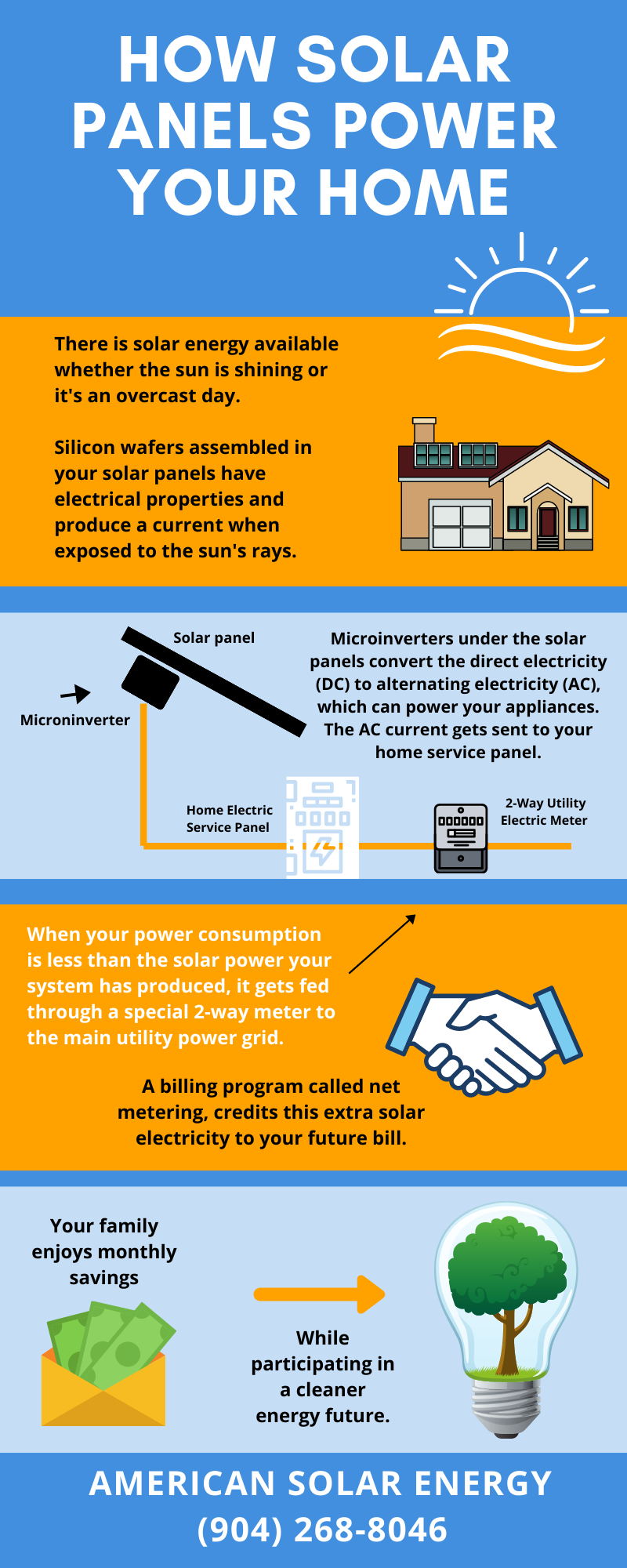When you understand “how” solar power works, you can clarify whether it’s the right fit for your family. Here’s a simplified explanation of how panels capture the sun’s rays to power your family’s home.
Solar panels have an element called silicon. When sunlight hits the solar panels on your roof, the silicon’s electrons begin to move, which creates a flow of electricity. However, this direct current needs to be converted into usable electricity.
An inverter or several microinverters convert the direct current or DC electricity into alternating current or AC electricity. It’s in this form that it can power many home appliances.
When your solar panels produce more power than you are using, you can send it to the power grid. Many utility companies will give you credit for this in a program called net metering. The extra credits you gain are applied to your future bills.
See Infographic below for an easy visual.

